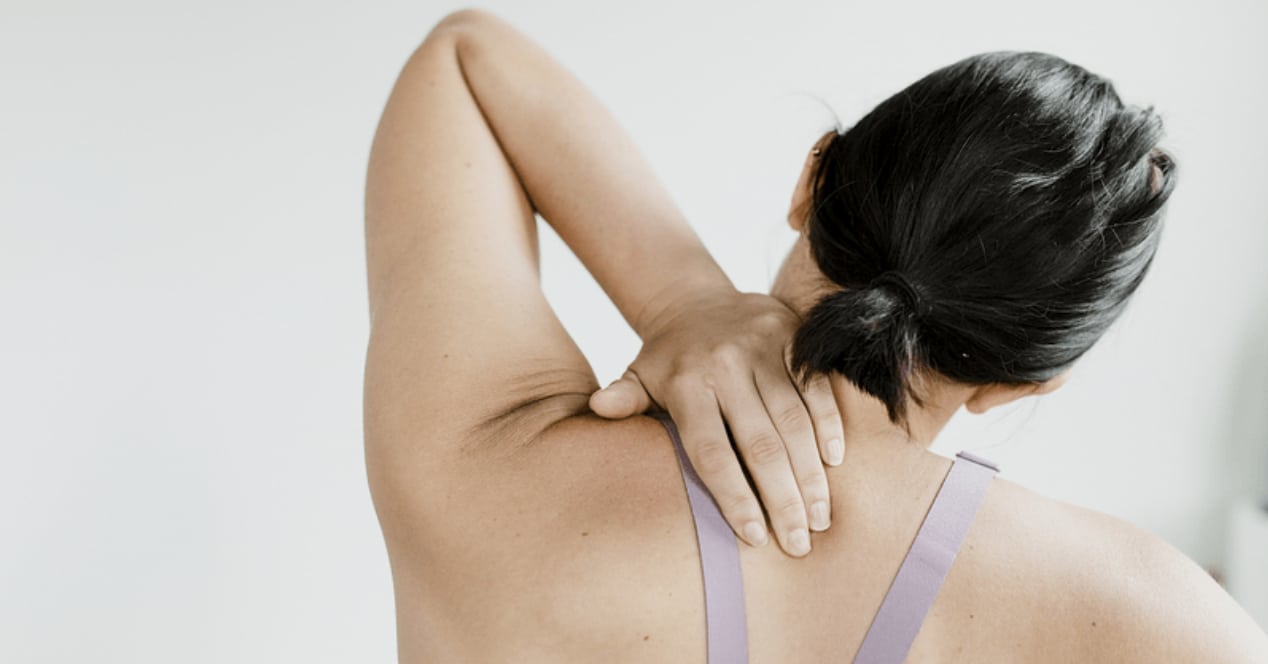
Back pain can make any type of physical activity almost unbearable. Whenever back pain is severely intensified, our first instinct is to rest. While not a bad idea, it backfires at some point. It is advisable to know the origin of the pain. Next we discuss cervical spinal stenosis.
In spinal stenosis exercise cases, there is often a fine line between good activity and bad activity, but where good movement can greatly improve strength and stability, bad movement can lead to increased pain. and even surgery. It is important to differentiate between the two.
What is it?
Spinal stenosis simply means narrowing of the spinal canal and the areas where the nerves exit the spine. The word "stenosis" means narrowing. That is why on most MRIs, we see the word "stenosis" or "stenotic changes" on the report. If there are spaces in the spine that narrow beyond what we would consider "normal," the radiologist will use the term stenosis.
However, that does not necessarily mean that we have "true" spinal stenosis, which is classified by the presence of the following two symptoms:
- Back pain that worsens when walking and standing, but disappears when we sit or lie down.2
- Neurogenic Claudication: A term to describe a dull, shooting pain in the lower legs that continues to get worse when walking and standing, but disappears when we sit.
True spinal stenosis is caused by a general narrowing of the spaces in the spine through which the nerves pass. It is rare for anyone under the age of 50 to get true spinal stenosis.
Symptom
Common symptoms of cervical spinal stenosis are:
- Neck Pain
- Pain in one or both arms
- A feeling of electrical charge or tingling sensation that shoots up the back when we move our head
- Numbness in the arms or hands
- Some weakness in the legs or feet, which can create some problems with walking and balance
prohibited exercises
There are some exercises and movements that are not recommended with spinal stenosis. It is convenient to take them into account so as not to worsen the cervical lesion.
Excessive extension of the back
One of the most common stretches we tend to perform after a long period of time sitting or slouching is the standing back extension, or more accurately, the standing lumbar extension. It involves standing up straight, putting your hands on your hips, and leaning back as far as you can. In some cases, this type of compression on the back of the vertebrae can help make room for the spinal cord by pushing off some of the inflamed tissue.
However, in most cases, it causes worse symptoms and more pain. If we tend to experience more pain and stiffness after a back extension, we will try to avoid that stretch, and more importantly, we will try to avoid any activity that overextends the back, i.e. anything that requires let us lean back. Increased compression can worsen inflammation.
walk a lot or run
Some exercises for spinal stenosis are important, but too many, or the wrong kind, can be detrimental to pain. While jogging and running are generally considered "easy" exercises and associated with low or light impact, jogging and running generally qualify as high-impact exercises, especially if you don't have access to a soft or clay trail, but instead look forced to run on the pavement.
Repeated trauma to the knees and spine is less than ideal. On the other hand, walking for long periods of time, or long distances, can also exacerbate back pain. We'll consider starting with shorter, more tolerable distances and making modest increases in pace and distance without starting to jog.
Certain stretches and poses
The aforementioned back extension exists in a variety of common poses and spinal stenosis exercises, including the cobra, the bridge, most lower back exercises that involve hyperextension (like the Superman), and more. .
Although it's a good idea to strengthen your lower back muscles, it's much better to avoid flexing or extending your spine when doing so. Instead, we'll look at isometric exercises that revolve around stabilizing the back and keeping it rigid against an outside force.
rounded back
Free weights can be a great help for someone with back pain, as long as we train with a professional and have received prior authorization from the doctor. Certain exercises can greatly strengthen the muscles that support the spine and make it easier to maintain a healthier posture in a variety of activities and positions. Free weight exercises can also help address one-sided imbalances in the body, such as uneven strength in the legs, hips, shoulders, and arms, which can translate into more back pain.
But when performed incorrectly, free weight exercises can easily lead to injury. An example of this is any exercise that requires the hip joint, from bent over rows and flies to deadlifts. Any rounding in the back can greatly destabilize the muscles around the spine and cause shear forces to impact the spine and affect the discs.
Resting too much in bed
It's tempting to lie in bed whenever possible, but resting too much in bed will only atrophy the muscles and put more pressure on the back and contribute to inflammation.
Staying active can help reduce pain and improve quality of life, at the cost of a few minutes a day spent sweating and moving.
contact sports
While it's good to stay active, we'll try to stick to sports that avoid sudden impact and contact. Martial arts, American football, basketball and soccer are just a few examples of sports where healthy training can very quickly lead to a sudden tear or fracture, especially when we come into physical contact with other people.

Recommended exercises
The exercises we teach below are for informational purposes only; they are not designed to be a "prescription" for spinal stenosis.
knee hugs
The common theme of the exercises recommended for spinal stenosis is that they all involve the opposite of spinal extension: we call this movement flexion.
Flexion exercises for spinal stenosis tend to produce a much better result than extension exercises. When we hug our legs, the pelvis rotates and our spine moves into this flexed position. This opens up the narrow spaces in the spine and allows the pinched nerves to breathe for a while, effectively relieving symptoms.
Flexion when sitting
This is a good spinal stenosis exercise to do from a chair. Again, as we lean forward, we will open up the spaces in the spine where the nerves pass through and allow them more freedom of movement. This exercise is also great for relieving back pain.
This exercise is a quick-relief position for spinal stenosis that we can get into if the pain comes on suddenly or worsens and we find a convenient place to sit.
Buttocks stretch
This stretch will also help treat piriformis syndrome and encourage quick relief from piriformis syndrome. This exercise is more of a stretch than a spinal exercise, but it stretches a muscle group closely related to the spine called the "glutes."
These muscles are often tight in people with spinal stenosis and can push the spine into a more compromised position.
Hip flexor stretch
In many people with spinal stenosis, the posture has something called an anterior pelvic tilt. This is a pelvic position where the pelvic bowl tilts forward. This is actually a bad position for someone with spinal stenosis; increases the extension of the spine and will worsen the pain.
If we have an anterior pelvic tilt, the hip flexors are likely to be tight. By stretching the hip flexors with the exercise shown above, we can reduce that anterior pelvic tilt and take a little more pressure off the spine.